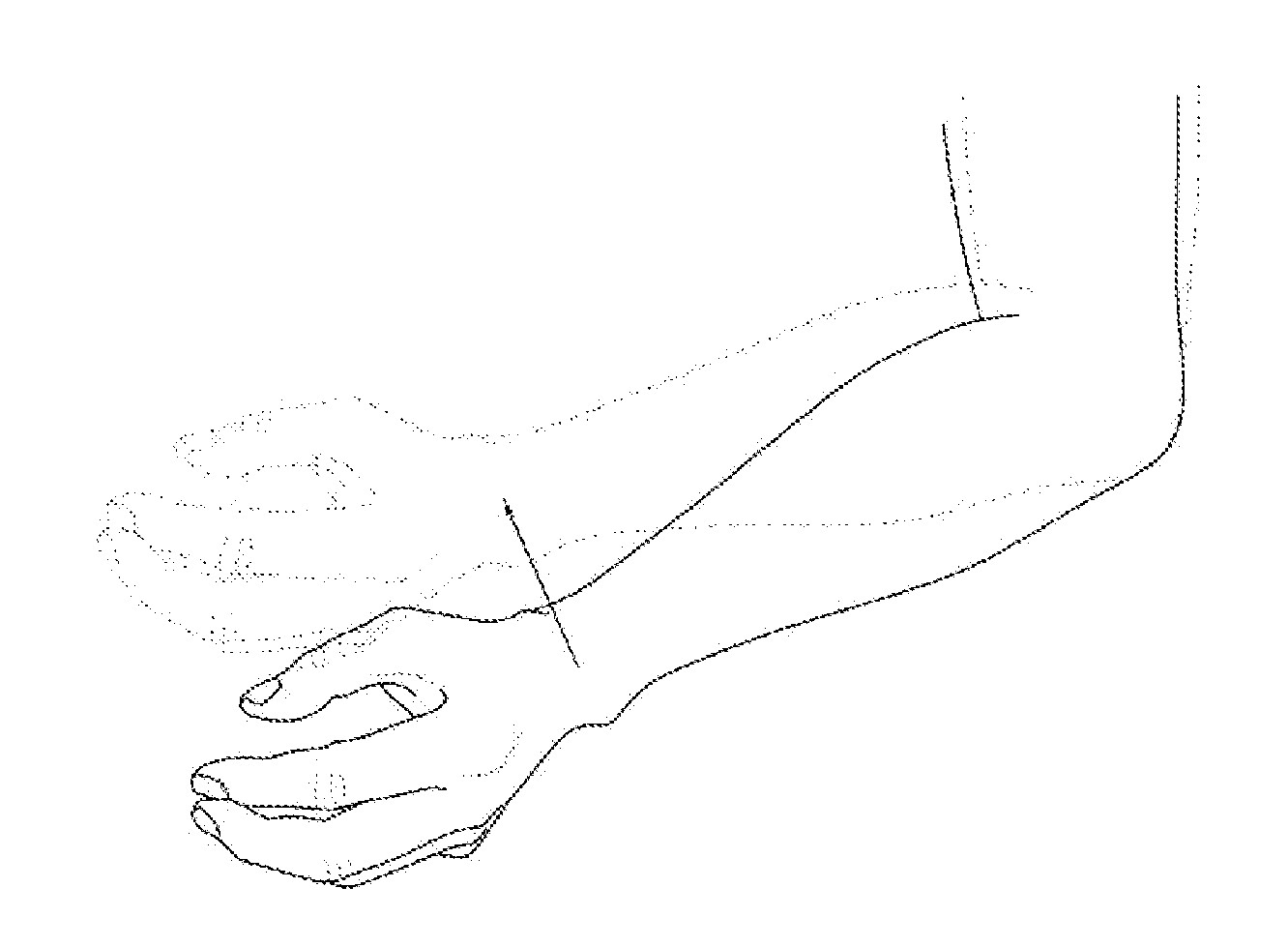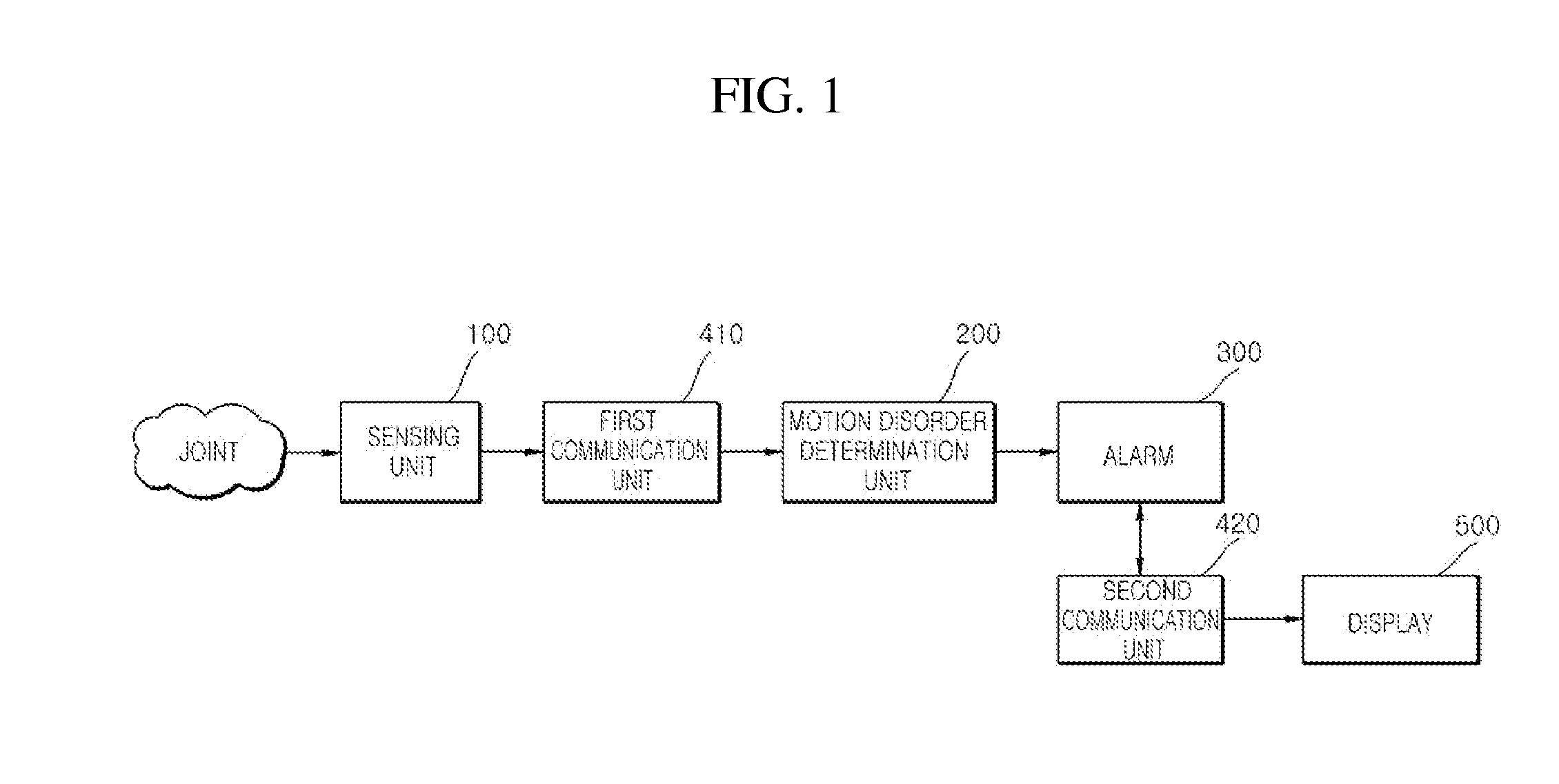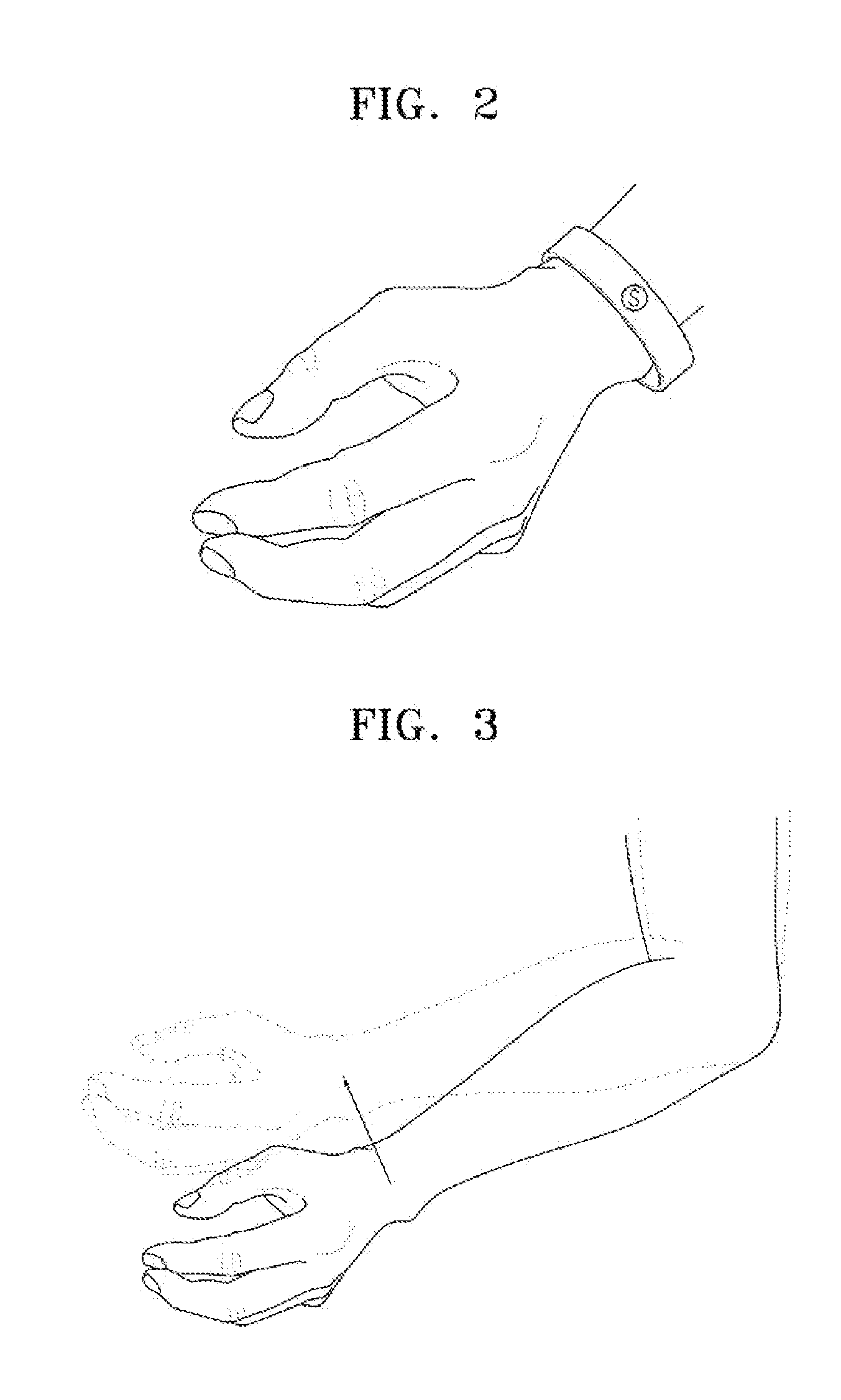Apparatus for early detection of paralysis based on motion sensing
a technology of paralysis and motion sensing, applied in the field of paralysis early detection based on motion sensing, can solve the problems of no apparatus which can determine the occurrence of stroke in patients recovering from mild stroke, and high possibility of suffering from severe strok
- Summary
- Abstract
- Description
- Claims
- Application Information
AI Technical Summary
Benefits of technology
Problems solved by technology
Method used
Image
Examples
first embodiment
[0044]The motion disorder determination unit 200 receives a motion characteristic value of each distal end of a patient body extracted by the sensing unit 100, and determines whether a difference between the motion characteristic values of the right and left distal ends exceeds a reference value.
[0045]That is, the motion disorder determination unit 200 determines whether a patient wearing the sensing unit 100 begins to show a hemi-paralysis symptom, which is an early-stage symptom of a stroke, based on a difference in motion between left limbs and right limbs of a patient body. For example, the motion disorder determination unit 200 determines whether a difference in angular velocity between a left wrist and a right wrist of a patient falls within a normal range depending on the degree of extension and flexion thereof.
[0046]Here, the term “reference value” refers to a limit value of difference in motion which can occur without paralysis. That is, a difference in motion below the ref...
second embodiment
[0057]The motion disorder determination unit 200 receives a motion characteristic value of each of the distal ends extracted by the sensing unit 100, and determines whether a difference between the sum of motion characteristic values of each of the distal ends for a unit time and the sum of motion characteristic values of each of the distal ends for a subsequent unit time exceeds a reference value.
[0058]Now, this operation will be described in more detail.
[0059]A patient completely recovered from initial mild paralysis shows normal motion of four limbs. However, since there is a strong possibility that such a patient will suffer a second stroke, intensive monitoring of the patient is needed.
[0060]Therefore, reference data of individual patients in a normal state on a motion characteristic value per unit time is collected, and data measured over time is compared with the reference data, thereby enabling early and sensitive detection of paralysis due to the occurrence of a stroke.
[006...
third embodiment
[0064]The motion disorder determination unit 200 receives a motion characteristic value of each of the distal ends extracted by the sensing unit 100, and determines whether the sum of motion characteristic values of each of the distal ends detected by the sensing unit for a unit time is less than a reference value.
[0065]That is, the motion disorder determination unit 200 may detect the occurrence of paralysis by detecting that the motion characteristic value of a patient for a certain period of time does not reach the reference value. Since a normal person feels uncomfortable when the joint is not moved for a certain period of time, the person without paralysis unconsciously moves the body slightly.
[0066]If there is no movement in four limbs of a patient for a certain period of time, for example 30 minutes, 1 hour, or the like, it can be determined that the patient suffers paralysis.
[0067]Here, the reference value refers to a minimum value among sums of the motion characteristic val...
PUM
 Login to View More
Login to View More Abstract
Description
Claims
Application Information
 Login to View More
Login to View More - R&D
- Intellectual Property
- Life Sciences
- Materials
- Tech Scout
- Unparalleled Data Quality
- Higher Quality Content
- 60% Fewer Hallucinations
Browse by: Latest US Patents, China's latest patents, Technical Efficacy Thesaurus, Application Domain, Technology Topic, Popular Technical Reports.
© 2025 PatSnap. All rights reserved.Legal|Privacy policy|Modern Slavery Act Transparency Statement|Sitemap|About US| Contact US: help@patsnap.com



